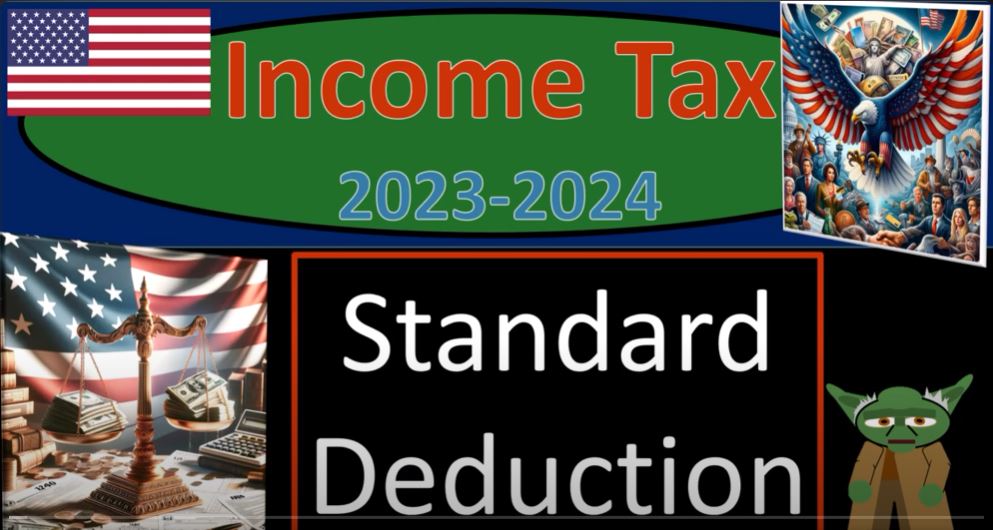As we gear up for another tax season, it’s time to delve into the intricacies of the Income Tax 2023-2024 standard deduction. Grab a cup of coffee because we’re about to decipher the tax code and explore the labyrinth of possibilities that come with income tax preparation.
Understanding the Basics: Most of the vital information can be found in the INSTRUCTIONS section of the Form 1040 for the tax year 2023, available on the IRS website (irs.gov). Our focus today is on the standard deduction, a crucial element in the income tax formula. We’ll be choosing between the standard deduction and itemized deduction, opting for the greater one to minimize taxable income and, consequently, reduce tax liabilities.
The Standard Deduction Game: The first half of the income tax formula resembles a quirky income statement, with income as the top line and expenses categorized into various deductions. These deductions can be above the line, schedule one deductions, or the below-the-line deductions, such as standard deduction or itemized deductions. The rule is simple: choose the deduction that leads to a lower taxable income, resulting in lower taxes paid.
The Rise of Standard Deductions: In recent years, the standard deduction saw a significant increase, prompting more taxpayers to opt for it rather than itemizing. Owning a home, typically accompanied by mortgage interest and property taxes, often sways the decision towards itemized deductions. However, the increased standard deduction has shifted the landscape, making it a more favorable choice for many.
Understanding Filing Status: Filing status plays a pivotal role in determining the standard deduction. Memorizing key figures, like $13,850 for single or married filing separately, and doubling it for married filing jointly, simplifies the process. The head of household status falls in between, with a standard deduction of $20,800.
Age and Blindness Factors: Adding complexity to the standard deduction are age and blindness factors. Those born before January 1, 1959, or who are blind at the end of 2023, may be eligible for additional deductions. The combinations of age and blindness factors vary based on filing status, creating a nuanced landscape for tax planning.
Special Considerations: Special situations, such as being claimed as a dependent on someone else’s return or the death of a spouse, bring unique considerations. These situations may impact the standard deduction and require careful attention to details.
Documenting Blindness: For those claiming blindness, certification from an eye doctor is necessary. Meeting specific criteria related to visual impairment is crucial, and proper documentation should be maintained for potential audits.
Charting the Course: A standard deduction chart breaks down the various combinations of age and blindness factors for different filing statuses. Understanding these charts can aid in maximizing deductions while minimizing taxable income.
Conclusion: As we prepare for Income Tax 2023-2024, the standard deduction proves to be a crucial player in the tax game. Navigating through filing statuses, age, and blindness factors requires careful consideration. Stay informed, document diligently, and make the most of the standard deduction to ensure a smoother journey through the income tax labyrinth.

